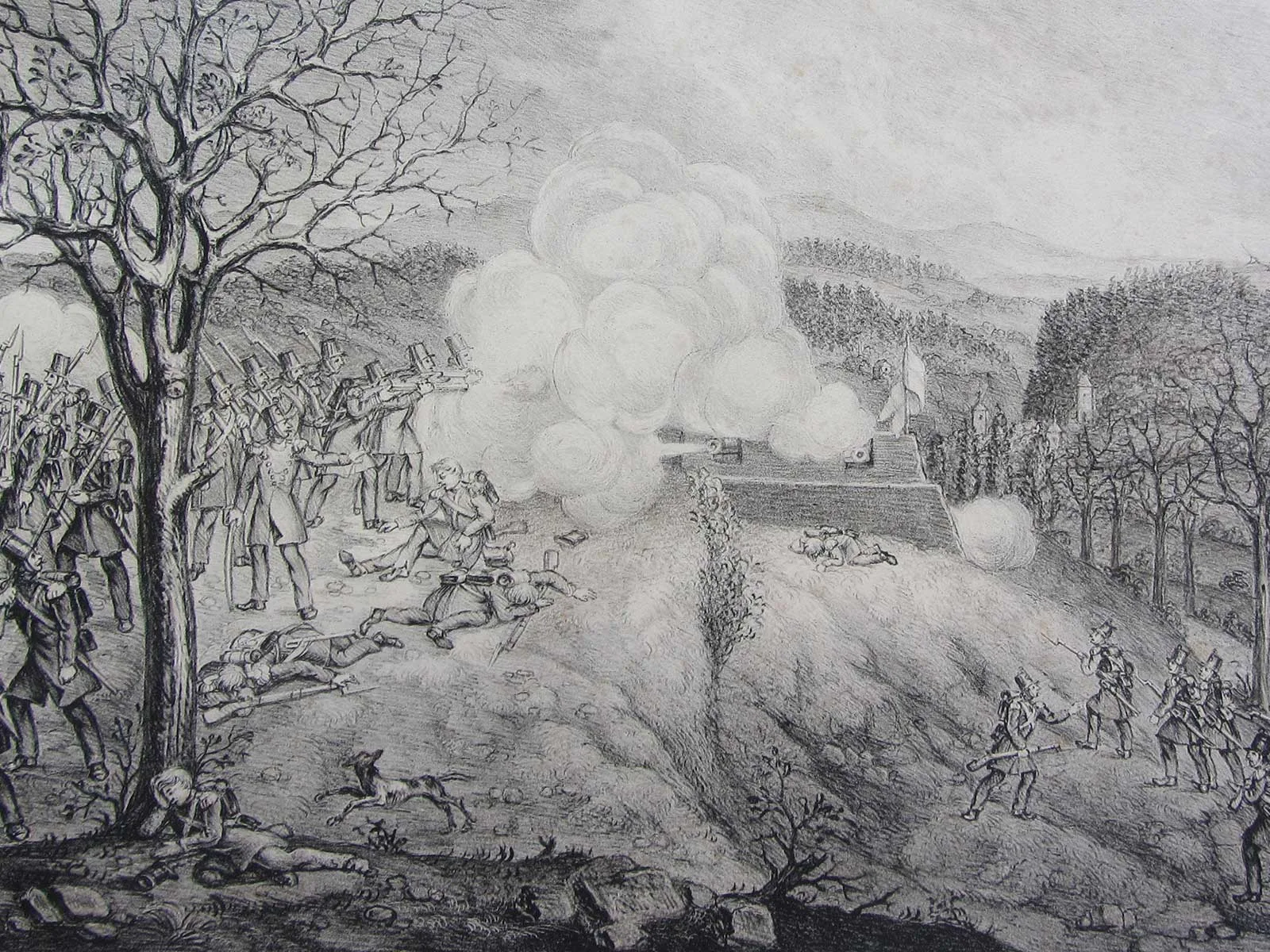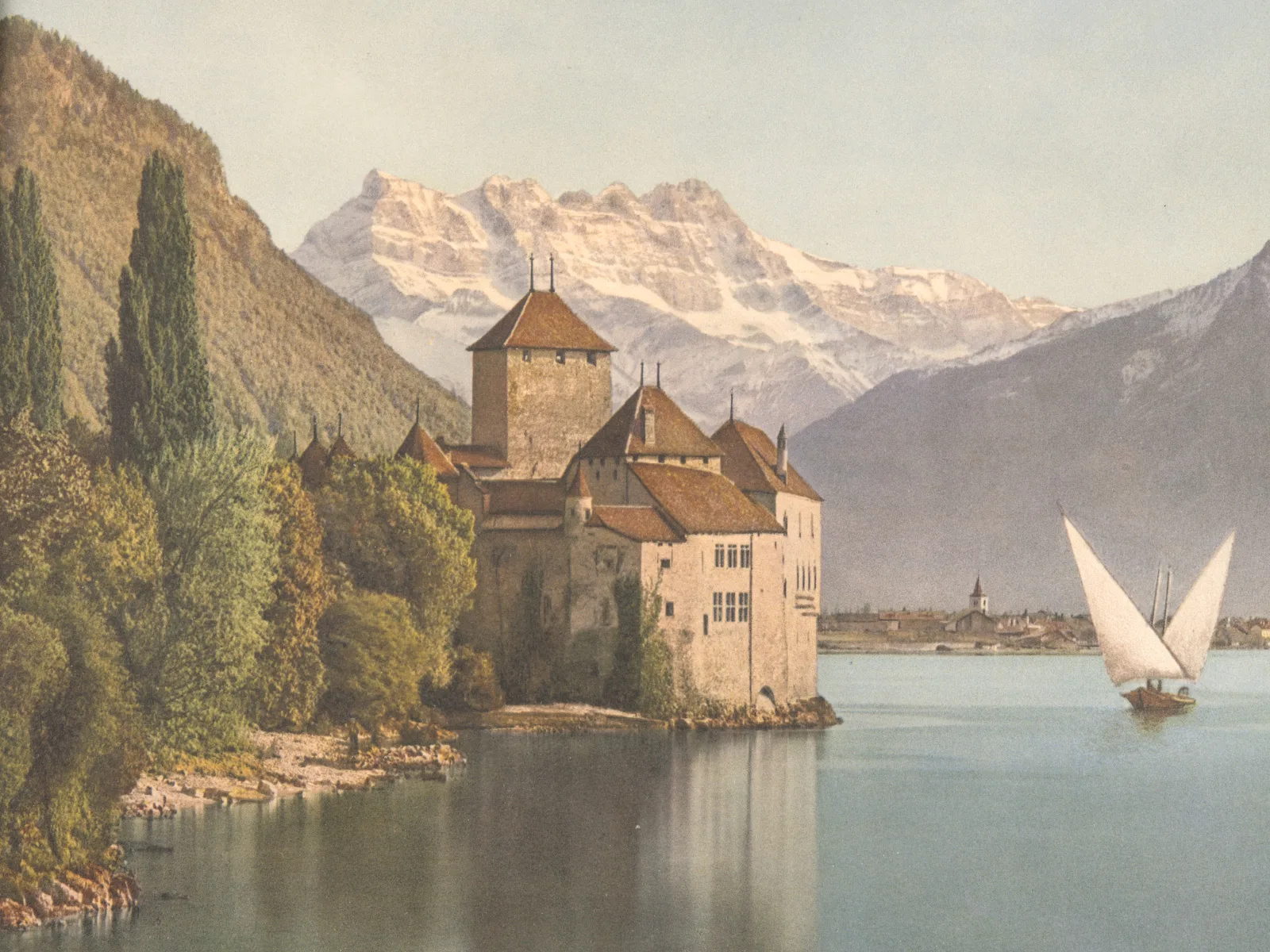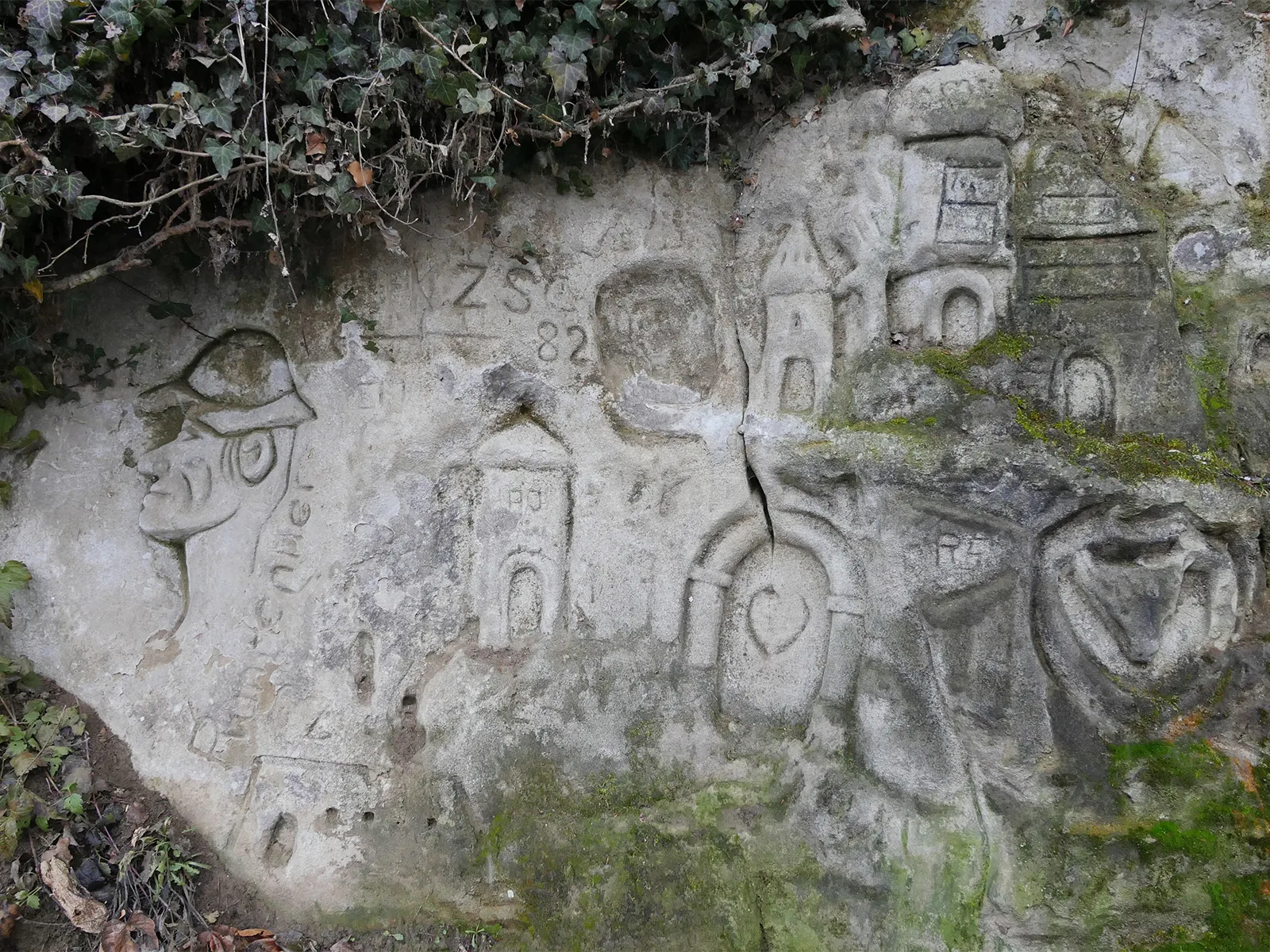
Museum zu Allerheiligen Schaffhausen, Inv. A 563. Photo: Jürg Fausch
Art follows bombs
On 1 April 1944, Schaffhausen was mistakenly bombed. The municipal museum lost more than 80 paintings. Then, artworks to match the scale of the losses started arriving from all over Switzerland. Even now, this level of cultural donation is testament to the huge solidarity compatriots felt for the stricken city.
When the Museum zu Allerheiligen was hit by bombs on 1 April 1944, it had only recently been opened. The town of Schaffhausen had begun in 1921 with the building of a regional museum of local heritage, on the site of the former Benedictine monastery. It was modelled on the Swiss National Museum in Zurich. After extensive construction work, the Museum had been officially opened on 11 September 1938.
On 1 April 1944, the unthinkable happened. 38 aircraft of the 8th US air fleet dropped their bombs over the city. They had actually intended to hit Ludwigshafen near Mannheim and the IG Farben factory, a producer of chemical weapons, which was located there. Due to bad weather over the European mainland, navigation errors and inadequate maps, the two bomber groups were much too far south. Through the broken cloud cover over Schaffhausen, they thought they had spotted a town in southern Germany, and fixed position on a ‘target of opportunity’. As a result, 40 people lost their lives, 270 were seriously injured and over 400 were left homeless.
Of the Museum zu Allerheiligen, the west wing of the group of buildings, constructed in 1938, was badly damaged. A high-explosive bomb caused the walls of the top storey to break away and the roof to collapse; an incendiary bomb started a powerful fire in what was known as the Stimmer Gallery – where the works of the famous Schaffhausen Renaissance master Tobias Stimmer (1539-1584) were presented. With the direct hits on the Museum, a large part of the collection of Old Masters was lost.
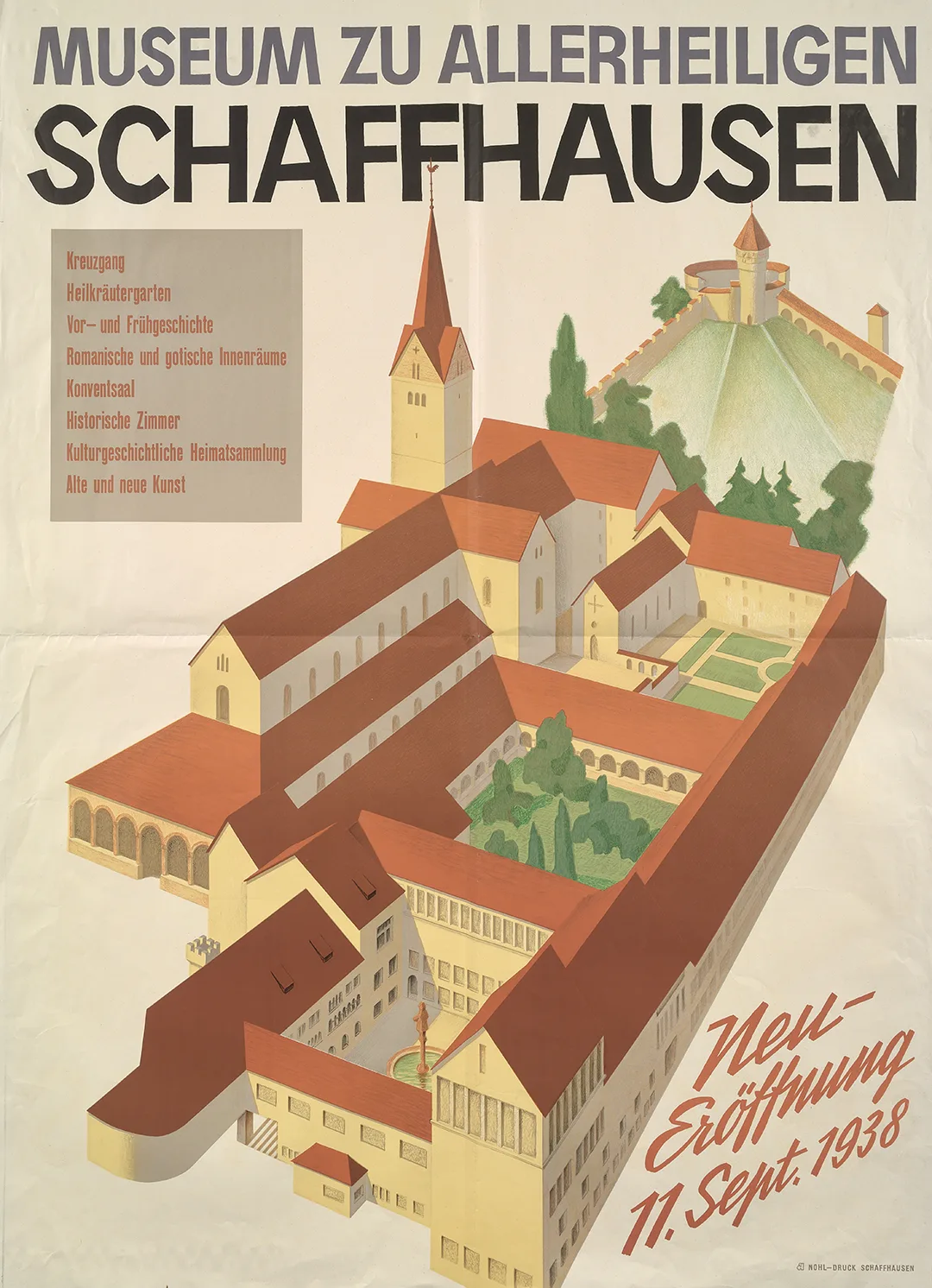
Poster to mark the opening of the Museum, Nohl Druck Schaffhausen, 1938.
Museum zu Allerheiligen Schaffhausen
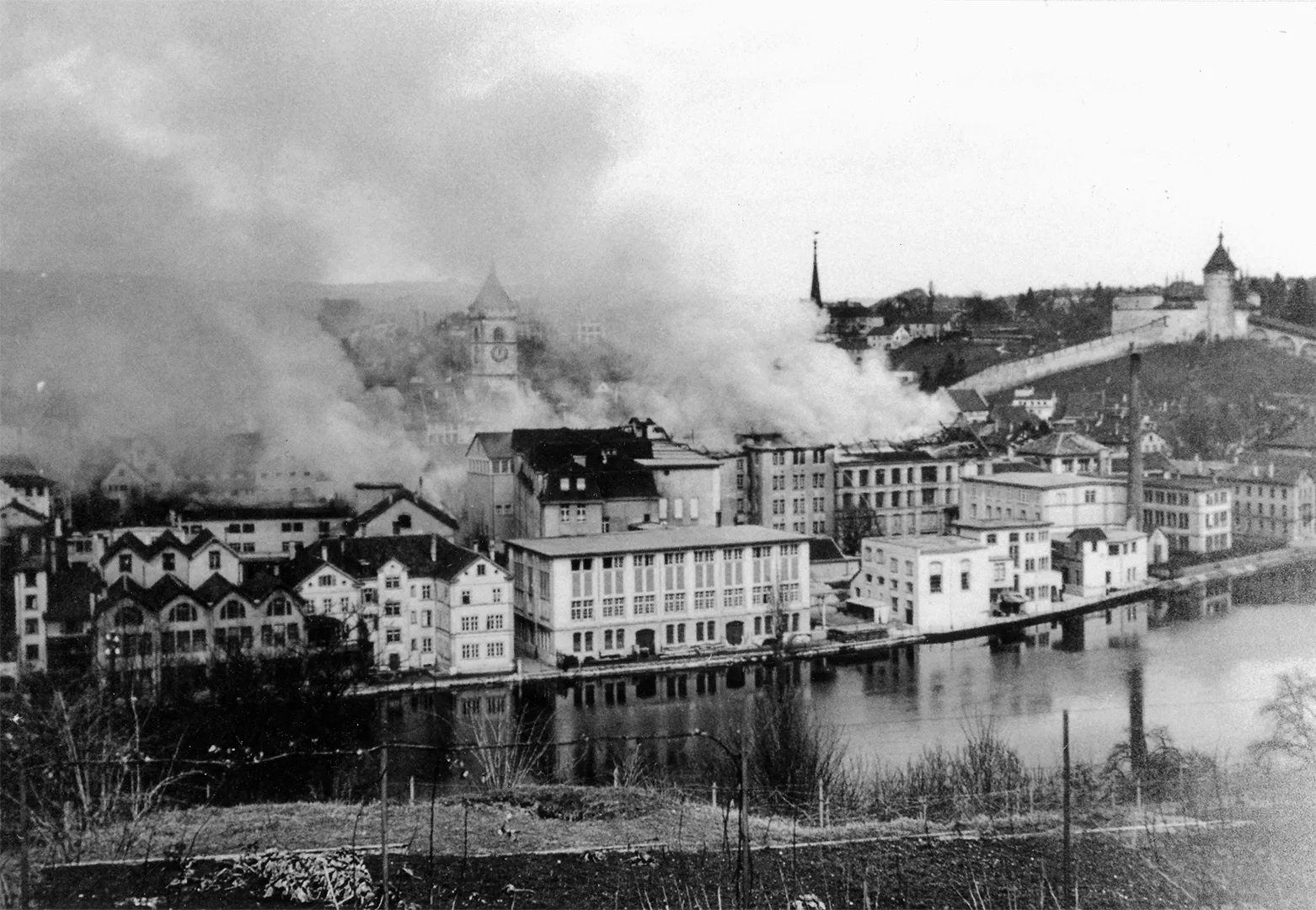
View from the opposite bank of the Rhine of the burning buildings of the Kammgarn and the Museum. Photo of 1 April 1944.
© Stadtarchiv Schaffhausen
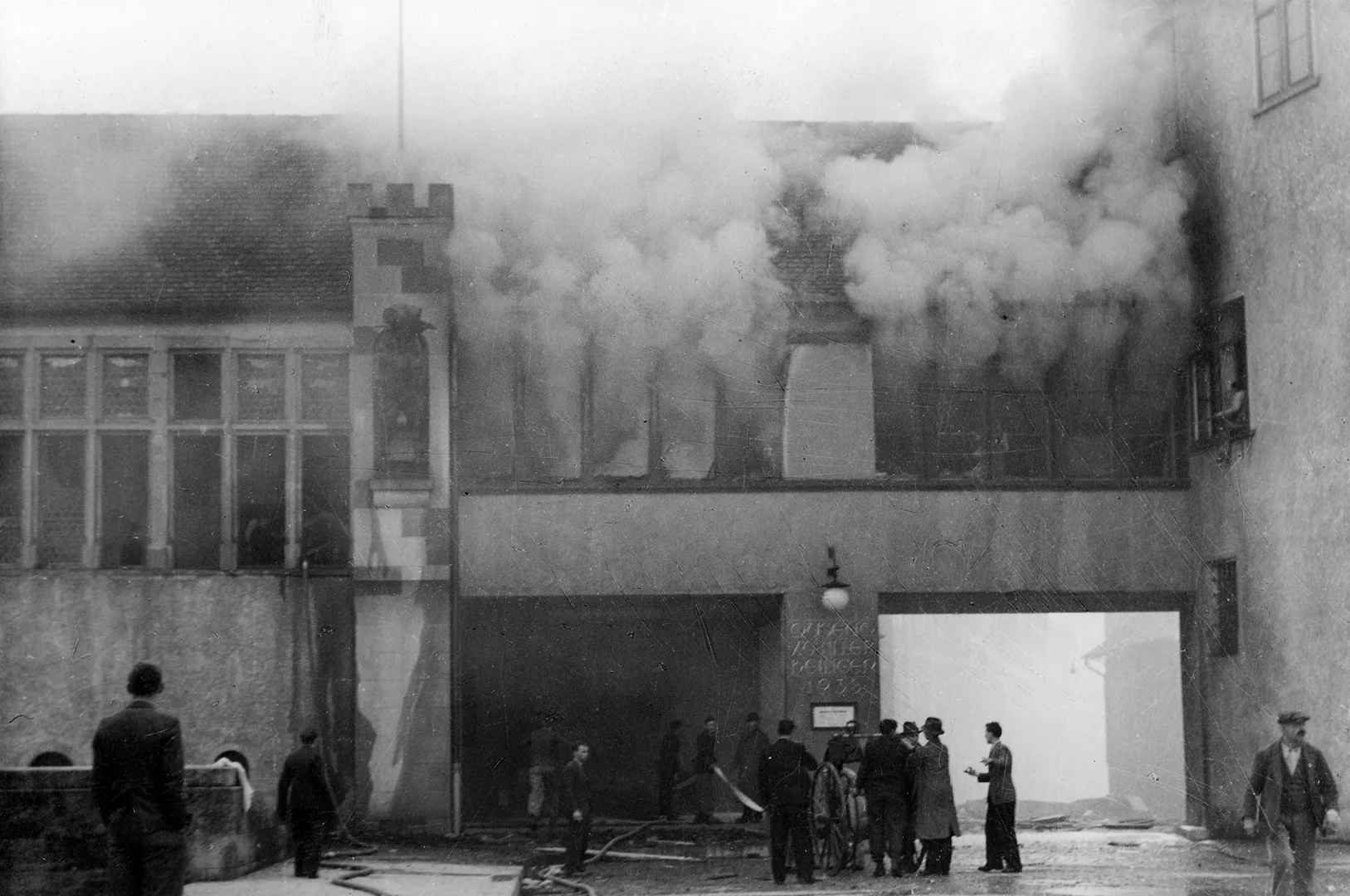
Clouds of smoke billowing from the art wing of the badly damaged Museum zu Allerheiligen. Photo of 1 April 1944.
© Stadtarchiv Schaffhausen
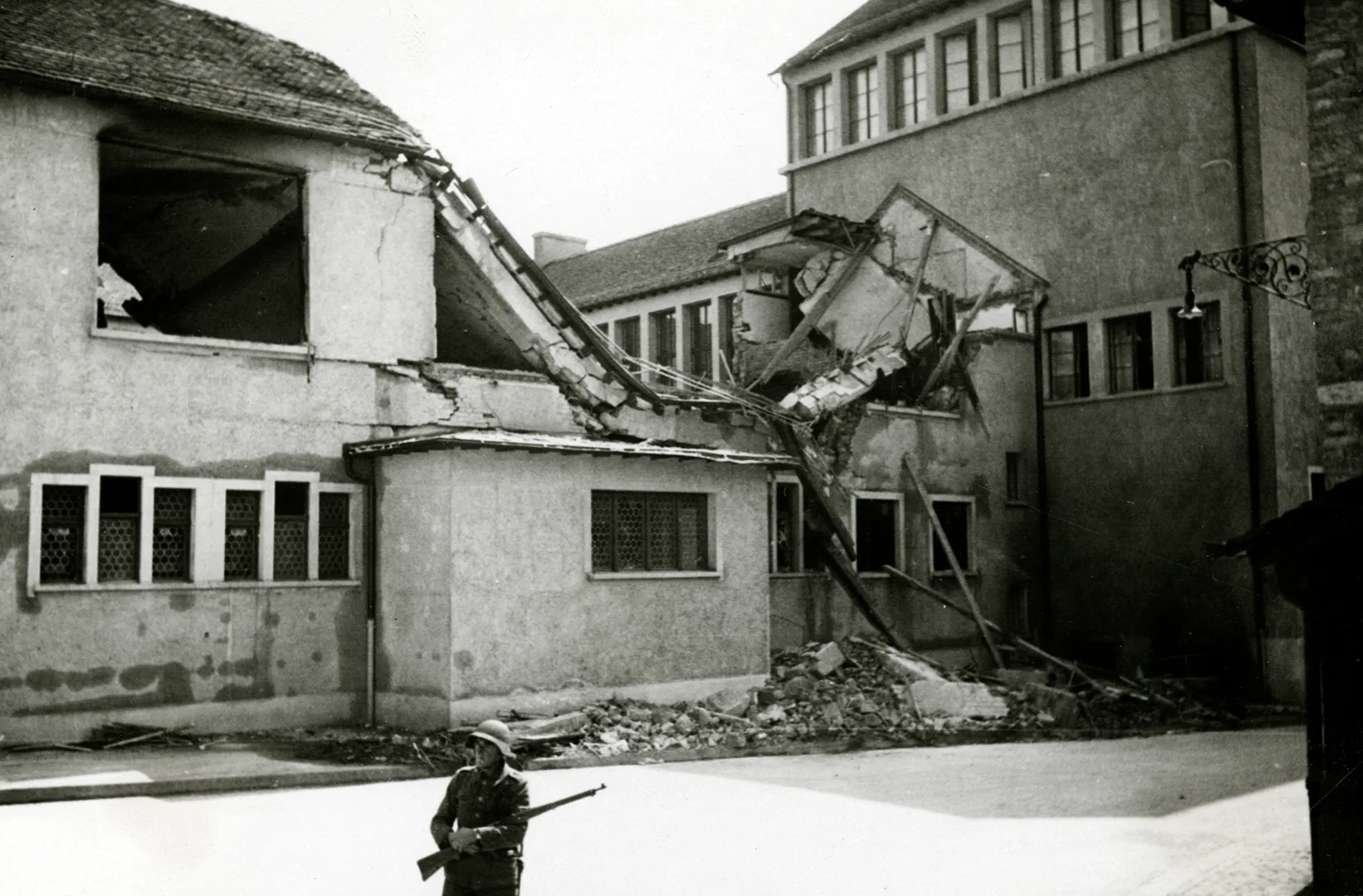
A high-explosive bomb penetrated the concrete roof of the newly constructed west wing and destroyed art galleries and historic rooms. Photo of 1 April 1944.
© Stadtarchiv Schaffhausen
Just a few days after the bombing, the ‘Zürcher Kulturspende für Schaffhausen’ (Zurich cultural donation campaign for Schaffhausen) was launched. This financial donation campaign was initiated by the newspaper Neue Zürcher Zeitung (NZZ), and with the help of local and cantonal personalities and Federal Council support it collected a sum of around 150,000 francs for the Museum zu Allerheiligen. Two thirds was available for the purchase of artworks, and one third was for a memorial to the victims of the bombing.
Likely triggered by the campaign initiated by the NZZ, a wave of solidarity swept across the country. From all corners of the land donations in kind arrived at the Museum, to make up for the losses suffered by the art section in particular. ‘Donations of art and cultural artefacts to the Museum zu Allerheiligen’, published in 1946, lists some 80 donations. These were mainly fine artworks. But they also included furniture, pewter and a tapestry.

Albert Anker, Das kleine Mütterchen (The little mother), around 1888. Donation by the Canton of Bern (Kunstmuseum Bern), 1944.
Museum zu Allerheiligen Schaffhausen, Inv. A 565. Photo: Jürg Fausch
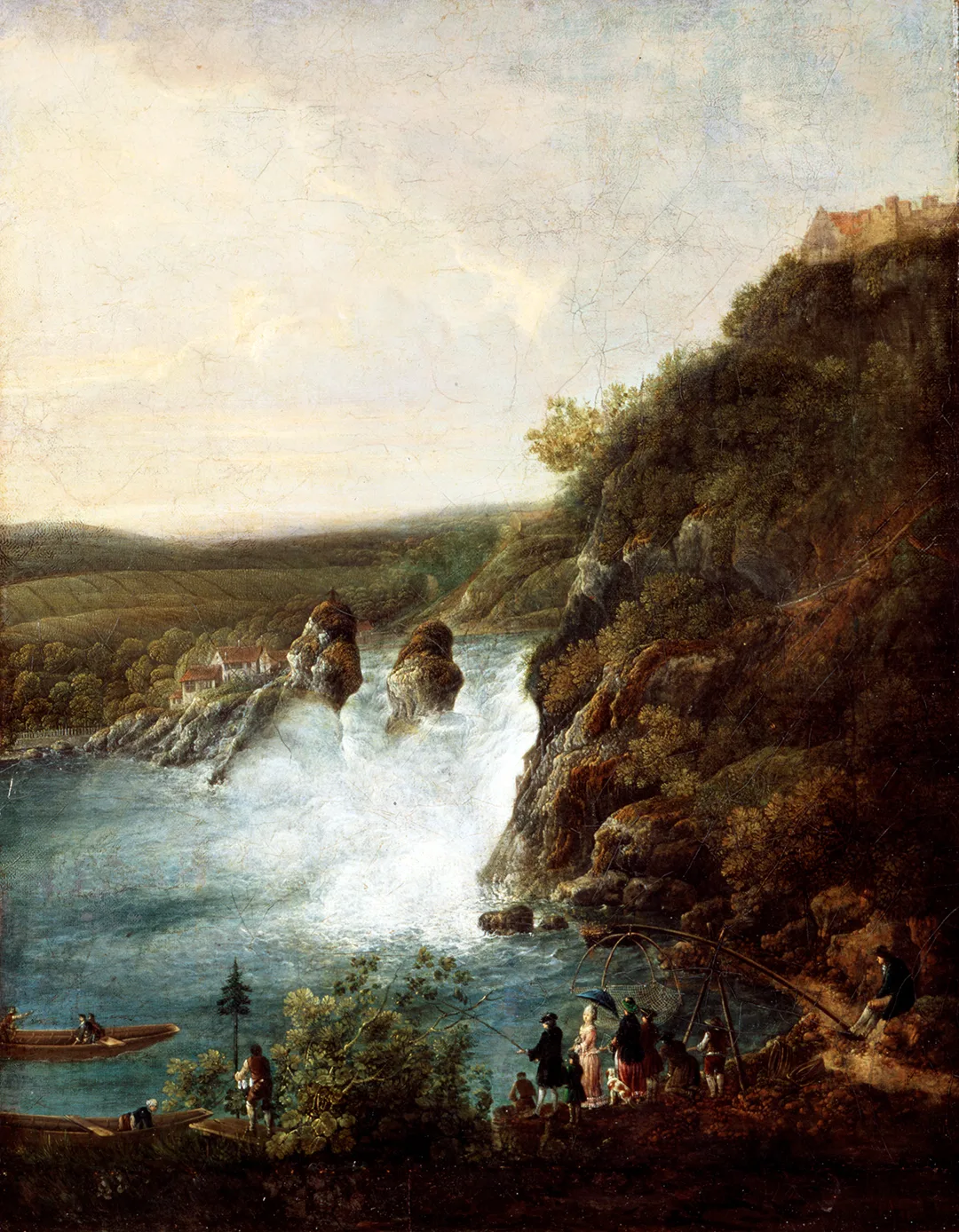
Johann Jakob Schalch, Der Rheinfall vom Zürcher Ufer aus (The Rheinfall waterfall from the Zurich bank), around 1780. Donated by the Canton of Basel-Stadt (Kunstmuseum Basel), 1944.
Museum zu Allerheiligen Schaffhausen, Inv. A 568. Photo: Jürg Fausch
These ‘donations of art and cultural artefacts’ came from a variety of sources. The cantons of Basel-Stadt, Bern, Fribourg and Vaud together donated nine artistic and cultural assets. The state council of the Canton of Bern donated the painting ‘Das kleine Mütterchen’ (The little mother) by Albert Anker (1831-1910) from its own art museum. Basel donated three works, including a very early view of the Rheinfall waterfall from the Zurich side as depicted by Schaffhausen artist Johann Jakob Schalch (1723-1789). The Swiss government also contributed to the donation with a new, very valuable permanent loan from the Gottfried Keller Foundation.
Towns and municipalities, particularly from French-speaking Switzerland, also joined in the show of solidarity. Ten works of art from Fribourg, Geneva, Neuchâtel and Vevey arrived at the Museum zu Allerheiligen. Geneva and Vevey were particularly generous: from the city on the Rhône came ‘Selbstbildnis mit Rosen’ (Self-portrait with roses) by Ferdinand Hodler (1853-1918), together with a landscape painted by his tutor Barthélemy Menn (1815-1893). Vevey donated the notable painting ‘Böckligumpis’ by Albert Anker – a genre scene in a classical setting.
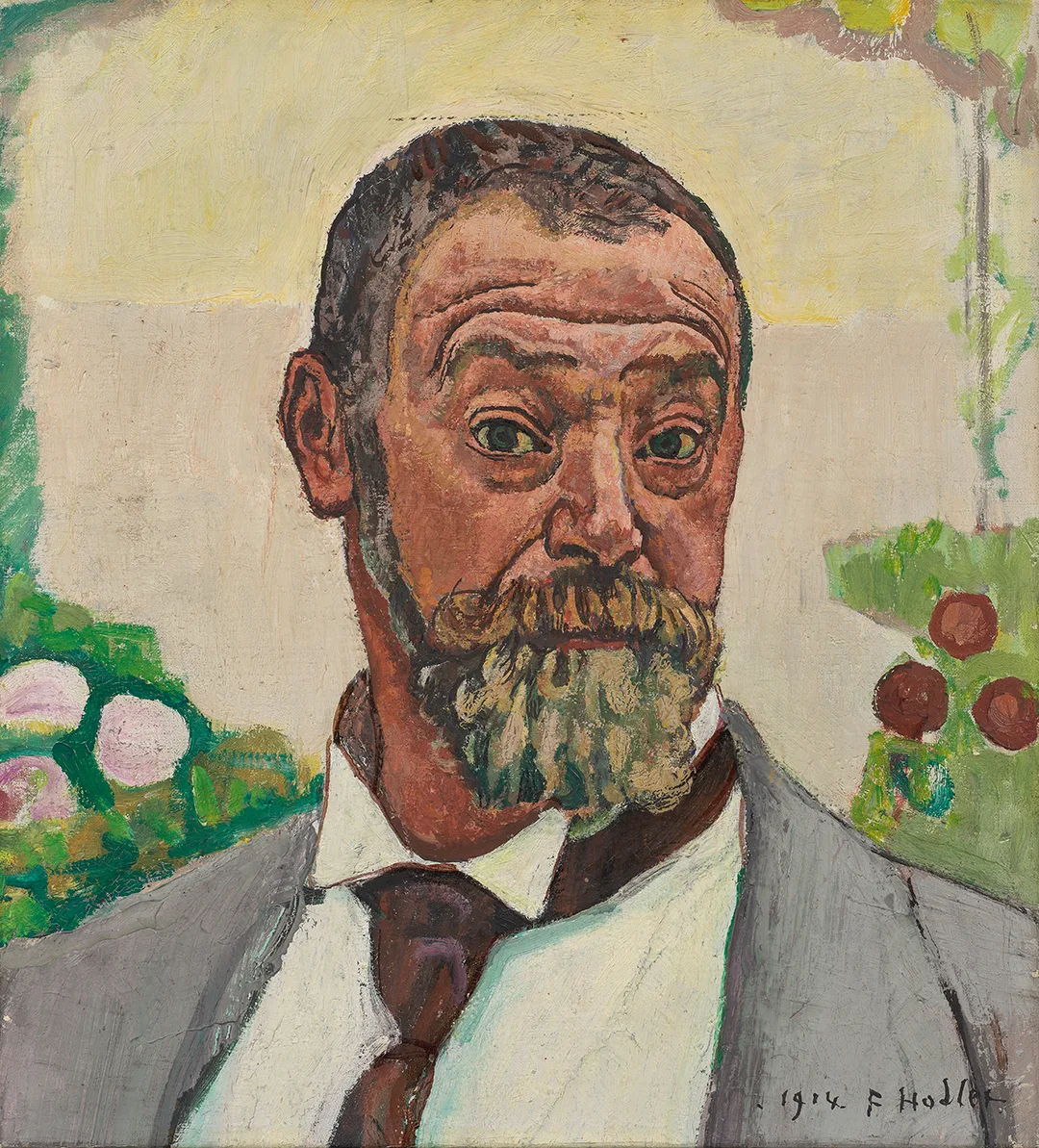
Ferdinand Hodler, Selbstbildnis mit Rosen (Self-portrait with roses), 1914. Donated by the City of Geneva (Musée d'art et d'histoire), 1944.
Museum zu Allerheiligen Schaffhausen, Inv. A 556. Photo: Jürg Fausch
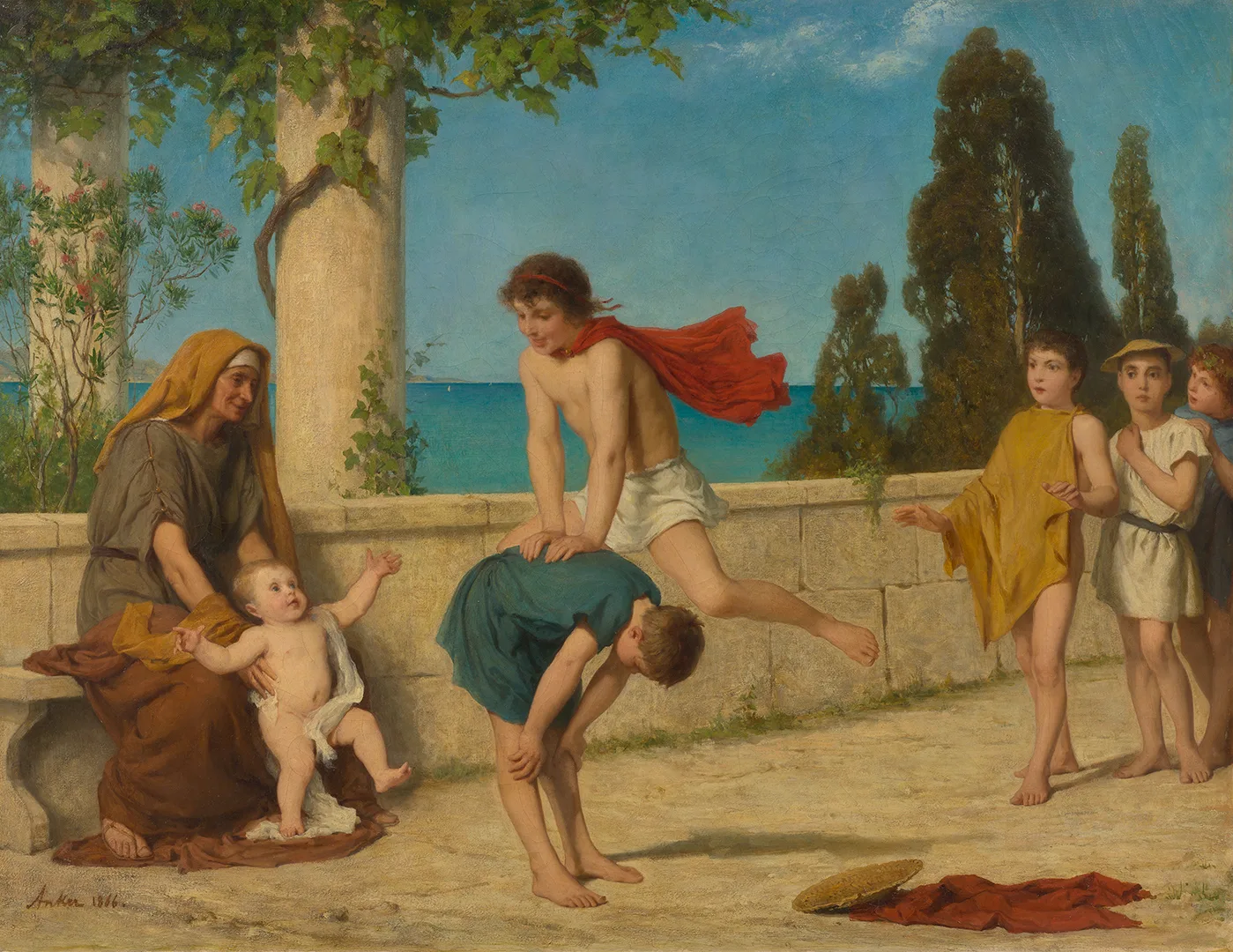
Albert Anker, Böckligumpis, 1866. Donated by the City of Vevey, 1945.
Museum zu Allerheiligen Schaffhausen, Inv. A 578. Photo: Jürg Fausch
The majority of the donations, however, came from private individuals. They expressed their shock with donations of what were in some cases quite significant artworks, including works by artists such as Hodler and Anker – and there was even a still life by Auguste Renoir (1841-1919). A number of companies and associations also contributed to enlarging the collections. The Swiss branch of the American company IBM, based in Zurich, revealed the motivation behind its donation: the company’s decision-makers hoped ‘that its gift would inspire other American business circles in Switzerland to make similar manifestations of sympathy, especially for the Museum’.
As a whole, the ‘donation of art and cultural artefacts’ was thus, from the beginning, in a spirit of solidarity. The process was largely spontaneous and entailed scant consideration of any collection strategy. Its unique character also lies in the range of provenances of its components. The donated cultural items include important masterpieces of Swiss art, as well as pictures whose significance lies primarily in the emotional value attached to them by their previous owners. From 18 May, the Museum zu Allerheiligen Schaffhausen will be displaying the collection of ‘cultural donations’ in all its diversity for the first time.
Art out of the rubble. Swiss cultural donations after the bombing of Schaffhausen in 1944
18.5.–20.10.2019
The accidental bombing of Schaffhausen by American aircraft on 1 April 1944 brought death and destruction across the town. The Museum zu Allerheiligen and what was then the Natural History Museum were among the buildings damaged. The tragic event was followed by an unprecedented wave of solidarity across Switzerland. Municipalities, cantons and private individuals donated not only money, but also artworks.
For the first time, an exhibition will now present the approximately 80 works of art from this ‘cultural donation’. Moving newsreel footage, eyewitness accounts and historic photos complement the exhibits. The permanent exhibition ‘Schaffhausen in the Second World War’ completes your tour, and places the exhibits within the broader historical context.

